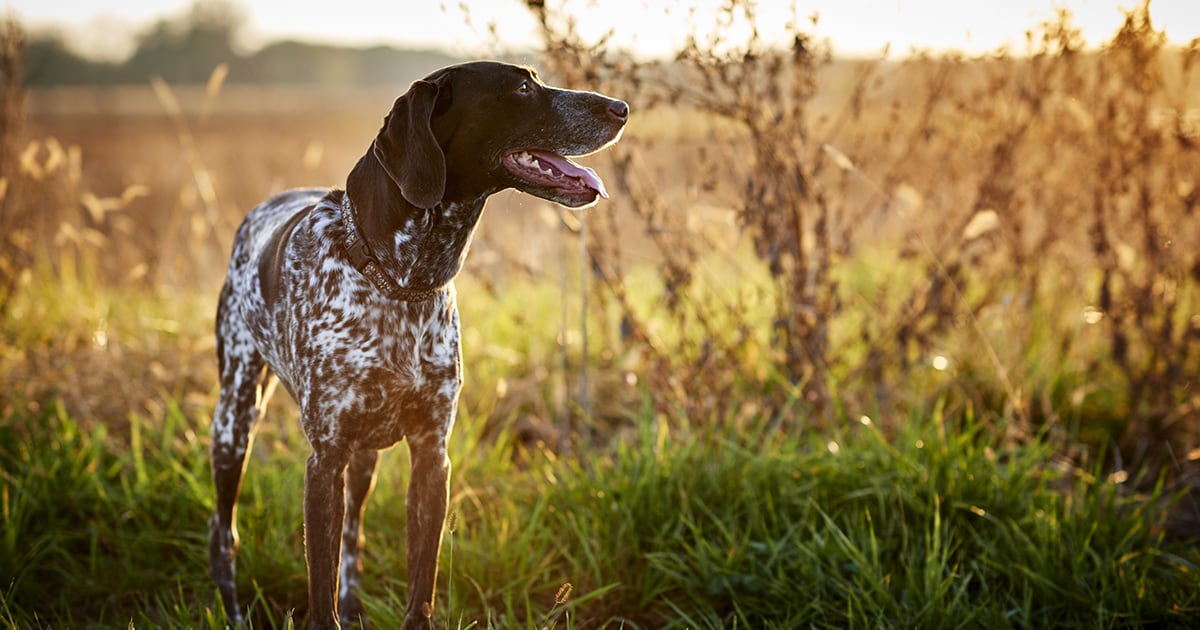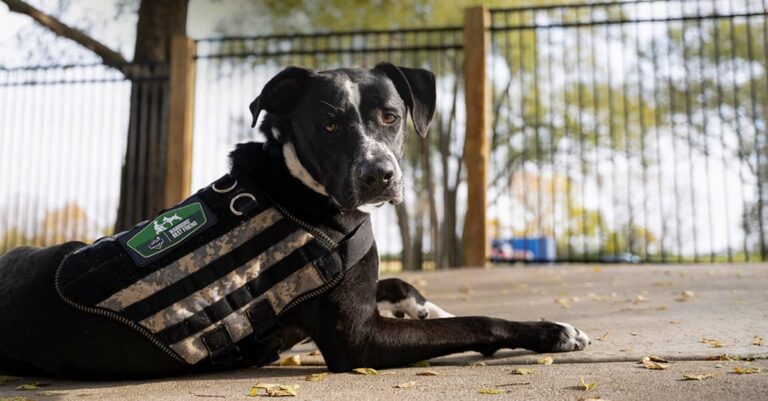There’s no single breed of hunting dog that is perfect for every situation, but with a little knowledge about the breeds you’re considering, you can narrow your search for your next hunting partner. This series will offer a primer on the most popular breeds of hunting dogs. Today, we discuss the German shorthaired pointer.
The German shorthaired pointer (GSP) is as all-purpose as a four-legged hunting partner can be. Though “pointer” is in the name, the GSP is equally adept at most tasks required of a hunting dog. According to the German Shorthaired Pointer Club of America:
“This is one of the few hunting breeds that can perform virtually all gundog roles. The German Shorthaired pointer (GSP for short) can be a pointer and a retriever. He can hunt upland birds and waterfowl, as well as rabbits, raccoons, and deer. Whatever you ask of your GSP, he will gladly comply with unshakable reliability.”
These extremely smart dogs appeal to hunters because they can point and retrieve at a very young age; they’ll excel at both at as young as eight weeks old. They just seem to know what to do. GSPs will retrieve pheasant, chase rabbits and even track down deer.
They’re generally not stubborn, take instruction well and are eager to please. These people-friendly dogs are the perfect field companion, as long as you don’t mind an extended “puppy” stage. GSPs aren’t considered to be mentally “adult” until they’re two years old, but they are known for acting young at heart even when they are well beyond two. They remain energetic, playful and very active well into their senior stage in many cases.
Physical attributes
Males are about two feet tall at the shoulder and tend to be between 55 and 70 pounds; females are just a touch smaller on average. Both sexes feature a lean but muscular build and long legs for covering a lot of ground or getting over obstacles as they chase down almost any prey in almost any environment, including the water — their big, webbed paws make them great swimmers.
And they just look cool. Their heads and ears tend to be mostly black or liver-colored, but the rest of the body is usually white with patches and ticks of darker color. Their hair is short like a coonhound or Weimaraner, velvety on the head and ears and rugged everywhere else, meaning they can glide through tall grass and woods without picking up bothersome stowaway burs and seeds. Be cautious, however. The short hair is a great utility in a hunting partner, but it also allows the dogs to get cold in harsher environments.
Care
The GSP’s short, sleek coat is easy to maintain, requiring a brush every few days, more frequently during heavy shedding periods (which happen frequently). As with every dog that has long floppy ears, your GSP will appreciate regular ear inspections and thorough cleanings. GSP is one of many breeds that is subject to bloat and hip dysplasia, so be on the lookout for symptoms.
Exercise
Your German shorthaired pointer is a highly energetic dog and will need regular exercise; perfect for year-round hunters. They excel at agility training, dock diving and simply running all-out as often as they can. It’s best to have a fenced-in, open area for a GSP to explore and goof around in, especially in that under-two puppy stage.
Training
These are smart dogs with even temperaments that are eager to please and need to be around people. In other words, they’re perfect dogs for training for a variety of tricks and tasks. In fact, they’re so energetic and excitable that they need lots of training. Giving them new things to learn can prevent boredom; a bored GSP under three years of age can be destructive.
Nutrition
An active German shorthaired will greatly benefit from a well-balanced diet specially designed for performance dogs. They need nutrients that support endurance and hard work, so a food that’s high in fat and protein is ideal. For endurance dogs like the GSP, a high-fat diet provides the fuel they need to go faster and farther for longer, while protein is vital for recovery from a hard day’s work.
According to the American Kennel Club, GSP puppies should be fed more than twice a day until they’re six months old. And because the breed is subject to bloat, they shouldn’t eat a meal for at least an hour after vigorous exercise.
Other considerations
With lots of attention, exercise and regular training to keep their minds occupied, German shorthaired pointers can be ideal pets and hunting partners. They’re perfectly suited for avid hunters.







